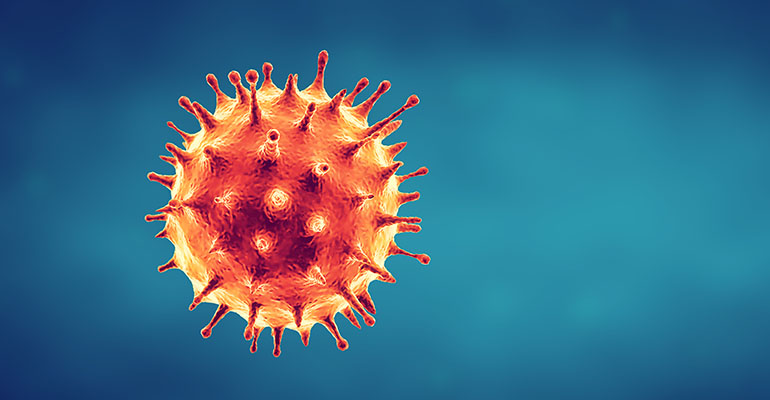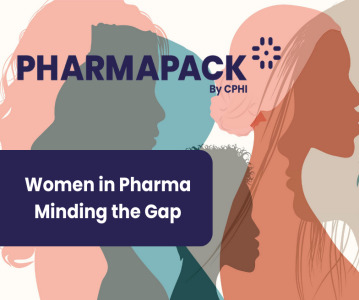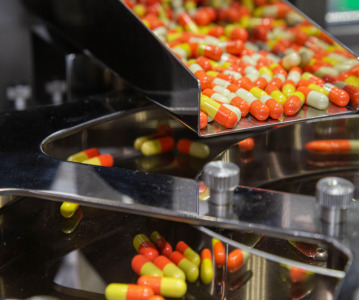What Impact will Coronavirus have on Pharma Supply Chains?

The worldwide inter-dependency of pharmaceutical manufacturing is highlighted by the ongoing Coronavirus situation. How can the global supply of diagnostic kits, drugs, medical supplies, and equipment be sustained to treat patients in the face of supply chain disruption?
COVID-19 Pandemic: What’s the response from the Pharmaceutical industry?
In late December 2019, the Chinese health authorities reported a cluster of pneumonia cases in Wuhan city, Hubei Province, China. The causative agent was subsequently identified as a novel coronavirus named COVID-19, which has spread rapidly worldwide to cause a concerning number of fatalities. On March 11th, 2020, the World Health Organization (WHO) declared the COVID-19 outbreak to be a pandemic, prompting governments worldwide to implement increasingly strict measures in attempts to minimize the spread. The race is now on to develop a vaccine for patients infected with COVID-19, however this is a major undertaking estimated to take at least 12-18 months. Designing a therapeutic such as a commercialized form of RNA interference (RNAi) promises considerably faster delivery to market, yet efforts may be hampered by the fact that the virus is now believed to have evolved into two separate strains. In the meantime, alternative approaches to tackle COVID-19 include the evaluation of various anti-retroviral drugs for their efficacy in combating the infection, and repurposing of rheumatoid arthritis medications to treat patients with serious lung damage resulting from uncontrolled immune response. Both diagnosis and treatment are currently symptomatic.
Although global focus has so far been mainly on the immediate impact to public health, it has become apparent that COVID-19 has significant potential to disrupt pharmaceutical supply chains. With the number of confirmed new cases continuing to rise, ongoing restrictions could not only limit the production of essential medications but could also severely affect the business of companies engaged in multifarious drug manufacturing activities. By prompting discussion around how best to manage supply chains within a globally interconnected system, COVID-19 may pave the way to future-proofing pharmaceutical development and manufacture.
Sustaining drug production
According to Hamilton J. Lenox, Senior VP, Business Development at LGM Pharma, the COVID-19 outbreak has shown that China’s importance to the global pharmaceutical industry should not be under-estimated. “China is a main source of active pharmaceutical ingredients (APIs) and finished dose forms, as well as providing many essential intermediates and raw materials,” he reports. “Understanding China’s dominance in the market is therefore vital when it comes to establishing and de-risking pharmaceutical supply chains.” Indeed, China’s reach is clearly illustrated by the FDA’s efforts to monitor the COVID-19 situation, with approximately 20 drugs having so far been identified which solely source their APIs or finished drug products from China.
“It makes economic sense to look at multiple sources,” notes Dr. Sundar Narasimhan, Senior VP, Supply Chain Management at Neuland Laboratories Limited. “Distributing market share across several geographies helps to avoid creating a shortage situation that could put patients’ health at risk. Moreover, detailed mapping of chemicals is fundamental to sustain long-term supply.” Elaborating on this last point, Lenox explains that using multiple API suppliers does not necessarily guarantee uninterrupted drug production. “If all those suppliers are buying one key intermediate from the same source, continuous drug manufacturing cannot be guaranteed,” he says. “COVID-19 has really shone a spotlight on the need for thorough due diligence when it comes to qualifying pharmaceutical supply chains.”
“There’s certainly a strong argument to spread risk across suppliers and geographies,” adds Rosie Towe on behalf of the Pharmaceutical Supply Chain Initiative (PSCI). “Any industry that people rely on will be challenged over the coming months, but by developing a comprehensive understanding of the pharmaceutical supply chain – not just tier 1 but also tier 2 suppliers – drug manufacturers will be in a far stronger position to react appropriately to dynamic conditions.”
Tackling drug shortages
In recent years, countries such as India have made concerted efforts to shift more manufacturing activities internally. But despite these moves promising to mitigate risk by providing drug manufacturers with a greater choice of suppliers across the globe, a major hurdle remains in place. “Switching a source typically takes from 7 months to a year,” explains Narasimhan. “Samples must be brought in house, processes qualified, and approval granted. Only then can a new supplier be fully integrated into drug manufacturing processes.” Unfortunately, this means that changing suppliers will not be a quick-fix solution during the COVID-19 pandemic should a specific source suddenly become limiting, yet it seems highly likely that the pandemic will promote a dramatic change in mindset when it comes to identifying supply lines in future.
Any restrictions must be implemented sensibly
One area that has raised concern during the COVID-19 outbreak is the possibility that governments may ban the exportation of key materials such as APIs. Indeed, India’s Directorate General of Foreign Trade did restrict the export of 26 APIs in early March, prompting the Indian Pharmaceutical Alliance (IPA) and the Indian Drugs’ Manufacturer's Association (IDMA) to seek withdrawal of that notification. Mr. Sudarshan Jain, Secretary General of the IPA, notes that API stocks are robust and currently predicted to last well into May or mid-June. “Should shortages develop unexpectedly, any restrictions that may come into place will be intended to balance domestic demand and global commitment,” he notes. “Through exhaustive analysis and continual monitoring of the supply situation in China, we’ve taken steps to prevent disruption to supply, and we remain in a strong position to adapt as the situation evolves.”
The race to develop a coronavirus vaccine
The way the coronavirus outbreak will play out remains largely unknown at this time. One possible scenario is that seasonal change will limit the spread of the virus to allow daily life to return to normal. Another potential outcome is that the situation will worsen, with infection rates and morbidity continuing to rise. Either way, attempts to develop a vaccine must continue relentlessly in order to save lives and promote further discovery. “If COVID-19 shares similar traits to other viruses, it will be unable to survive for an extended period outside the host in warmer temperatures,” reports Lenox. “If this isn’t the case, we may see expedited approval pathways and a loosening of regulations to help drug manufacturers in delivering on this unmet medical need.” In fact, clinical work is already underway in China, demonstrating the commitment of the pharmaceutical industry to resolve the crisis. Whatever happens next, it is vital that we learn from this situation to better protect ourselves in the future.
The Impact of Coronavirus: Latest updates
For the latest updates on coronavirus and the impact on global pharmaceutical supply chains, stay informed through our CPHI COVID-19 Pharma Tracker. With the impact of coronavirus on the global economy already apparent, stay up to date on the latest approaches to vaccine development, and securing the long-term supply of essential raw materials, intermediates, APIs and finished dosage forms.
To have this content delivered to your inbox weekly, sign up to our newsletter.
Related News
-
News Pharmapack Awards 2024 Patient-Centric Design Award Winner – Dr Ferrer BioPharma
The 2024 Pharmapack Awards celebrated the best in innovation and design for the pharmaceutical packaging and drug delivery industry on January 24, 2024. -
News Women in Pharma: Minding the Gap at Pharmapack 2024
2024 marks the first year Pharmapack will host a Diversity track dedicated to bridging the gap within the pharmaceutical packaging and drug delivery sector. The track includes a panel discussion on 'Enabling Diversity in the Workplace,' focused... -
News Pharmapack Awards 2024 - Celebrating Packaging and Drug Delivery Innovation
The 2024 Pharmapack Innovation Awards ceremony celebrated the best in pharmaceutical packaging and drug delivery innovation at all levels. The awards were held on January 24, 2024 at the Paris Expo Porte de Versailles. -
News 2024 Pharma Industry Trends Outlook: Collaboration, Market Maturity, and Digital Futures
The annual CPHI Online 2024 Pharma Trends Outlook, in partnership with Arvato Systems, identifies 12 key industry trends shaping the life sciences industry in the coming year. -
News New Novo Nordisk AI hub for drug discovery to open in London, UK
Danish pharmaceutical giant Novo Nordisk will be opening an AI-based research facility in the heart of London to advance drug discovery operations. -
News BioNTech to begin mRNA vaccine manufacturing in Rwanda by 2025
German biotechnology company BioNTech has stated their intentions to begin production at their mRNA vaccine factory in Rwanda by 2025, which will mark the first foreign mRNA vaccine manufacturing site on the continent of Africa. -
News Women in Pharma: Looking back on 2023 and moving forward to 2024
In this monthly series, we interview women from across the pharmaceutical industry and supply chain to discuss the importance of gender diversity in healthcare, the workplace, and beyond. -
News CPHI Barcelona 2023: Partnering for Success – Managing Outsourcing Relationships to Optimise Manufacturing Operations
During CPHI Barcelona 2023, insightful content sessions offered attendees the chance to explore trending topics with expert speakers and panellists. Here, we summarise what the pharma industry and supply chain are talking about the most.
Position your company at the heart of the global Pharma industry with a CPHI Online membership
-
Your products and solutions visible to thousands of visitors within the largest Pharma marketplace
-
Generate high-quality, engaged leads for your business, all year round
-
Promote your business as the industry’s thought-leader by hosting your reports, brochures and videos within your profile
-
Your company’s profile boosted at all participating CPHI events
-
An easy-to-use platform with a detailed dashboard showing your leads and performance







